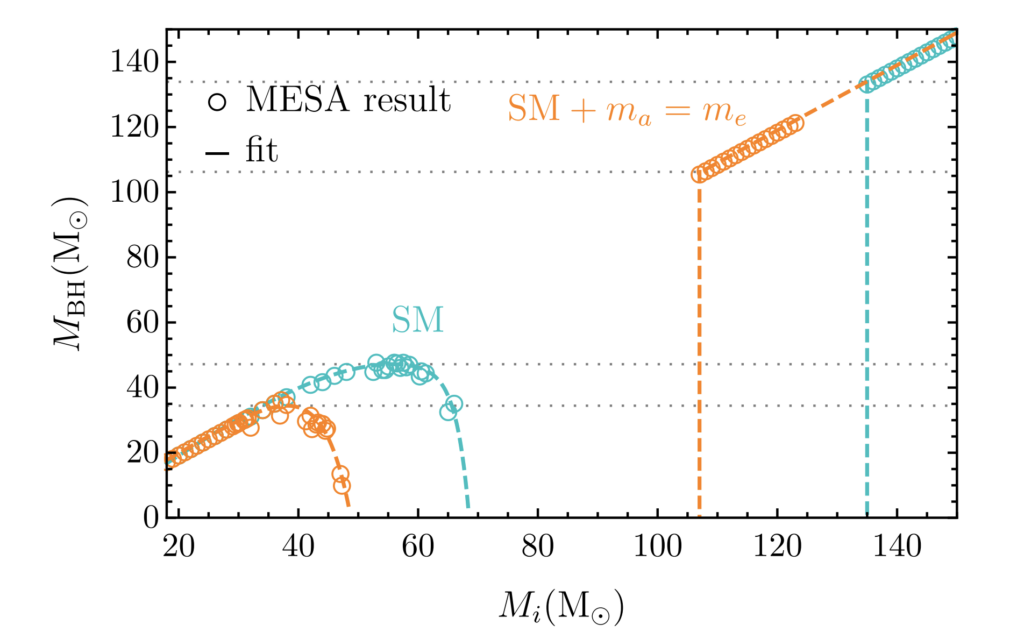Axion instability supernovae
Collaborators and I have long thought about the late stages of blue supergiant evolution, and the effect that new particles can have on it. Earlier work included studies of what happens when these new particles are produced and escape. I wrote about it here.
In a new work, a novel question is explored: what if they don’t? If the particles are a bit heavier and have a decent coupling to the rest of the material in the star, they may equilibrate. When that happens, they start to affect the star’s evolution.
As it turns out, this may even lead to a new instability in the stellar cores. This is in addition to the already dramatic pair-instability caused by electron positron production. What happens is that the star trades radiation for non-radiation. A bad trade, as this reduces the pressure.
Like pair-instability, the new instability can set a chain reaction in motion which leads to the ultimate demise of the star (leaving no remnant). This implies the existence of a black hole mass gap: an unpopulated region in the stellar graveyard. Due to new particles, this can now happen for much lighter stars (and black holes).

The plot shows the final BH formed from an initial star mass. As you can see, the mass gap (the range of masses in which no black hole is produced) predicted by the instability is quite a lot lower for the case with the extra particle (the orange line) than in the standard model (cyan line). It also ends at lower masses.
These effects would have real implications for gravitational wave observations. These black holes are exactly in the range that the LIGO/Virgo/KAGRA collaboration can observe. If this effect is present in stars, we should be able to distinguish that sometime soon!
My amazing collaborators and I did an immense amount of work designing these simulations. You can not only read how we did it, but also download our code here. Feel free to use it to your advantage!